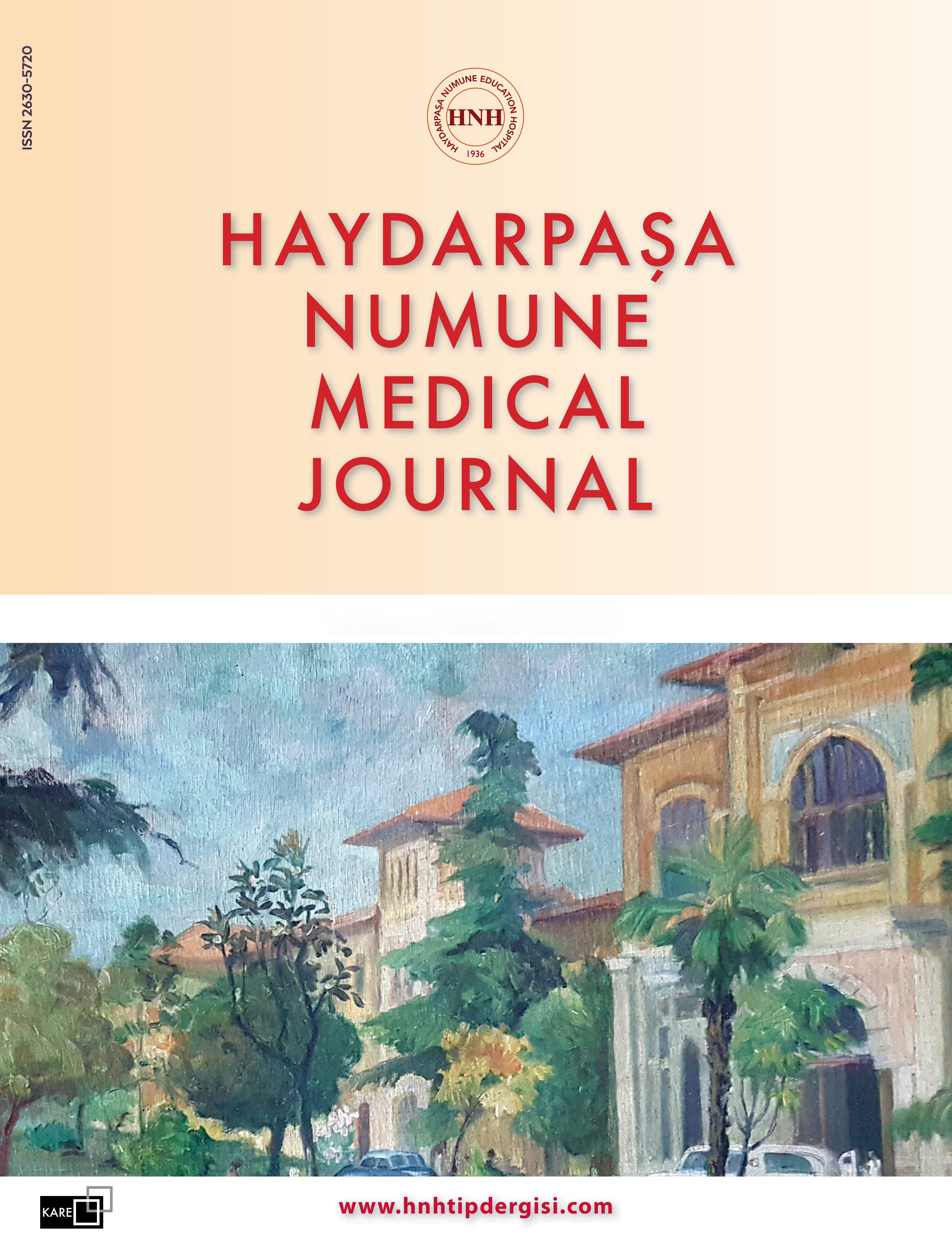Effect of COVID-19 on Vasospasm in Patients with Aneurysmal Subarachnoidal Hemorrhage
Eyüp Varol1, Yunus Emre Çakıcı1, Furkan Avcı1, Mustafa Umut Etli2, Serdar Onur Aydın3, Mustafa Efendioğlu4, Mehmet Reşid Önen5, Abuzer Güngör6, Cumhur Kaan Yaltırık11Department of Neurosurgery, Ümraniye Training and Research Hospital, İstanbul, Türkiye2Department of Neurosurgery, Siverek State Hospital, İstanbul, Türkiye
3Department of Neurosurgery, Kartal Dr. Lütfi Kırdar City Hospital, İstanbul, Türkiye
4Department of Neurosurgery, University of Health Sciences Türkiye, Haydarpaşa Numune Training Hospital, İstanbul, Türkiye
5Department of Neurosurgery, Medicalpark Hospital, İstanbul, Türkiye
6Department of Neurosurgery, Bakırköy Psychiatric and Neurological Diseases Hospital, İstanbul, Türkiye
INTRODUCTION: In our article, our aim was to compare patients with aneurysmal SAH (subarachnoid hemorrhage) treated during and before the COVID-19 pandemicregardless of whether they have COVID-19 pneumonia or notin terms of clinical course, mortality, and morbidity.
METHODS: In this study, we retrospectively analyzed 100 patients undergoing surgery at our institution between 02/2018 and 02/2021. These patients were followed up for a period of 1 month during the period with the highest risk of vasospasm. Patients were compared based on sex, aneurysm location, presence of single or multiple aneurysms, WFNS grade, Fisher grade, complications, frequency of vasospasm, and mortality and morbidity. Complication rate and vasospasm rate were found to be higher in aneurysmal subarachnoid hemorrhage patients seen during the COVID pandemic period. This may be due to the late admission of patients to the hospital.
RESULTS: Of those patients, 51% were female and 49% were male. The mean age was 51.33±12.94. The vasospasm frequency was 18% before the COVID-19 pandemic; during the pandemic, the rate significantly increased to 58%. Of the 38 patients with vasospasm, 26 were symptomatic and 12 were asymptomatic; symptomatic vasospasm was seen during the pandemic. Mean GCS scores and WFNS grades were significant, and the mean Hunt-Hess Scale score was nearly significantly higher during the pandemic in comparison to pre-pandemic time periods. During the pre-pandemic period, the complication rate was 40%, the presence of hydrocephalus was 8%, and vasospasm was unseen. During the pandemic, the complication rate significantly increased to 64%, hydrocephalus to 26%, and vasospasm to 26%.
DISCUSSION AND CONCLUSION: The higher complication rate and vasospasm rate in patients with aneurysmal subarachnoid hemorrhage seen during the COVID pandemic may be due to the late admission of these patients to the hospital. In SAH patients, the onset of symptoms instead of the date of hospital admission should be considered when determining the disease course, and the possibility of earlier vasospasm should always be kept in mind due to delays in diagnosing and treating the condition.
Manuscript Language: English
















